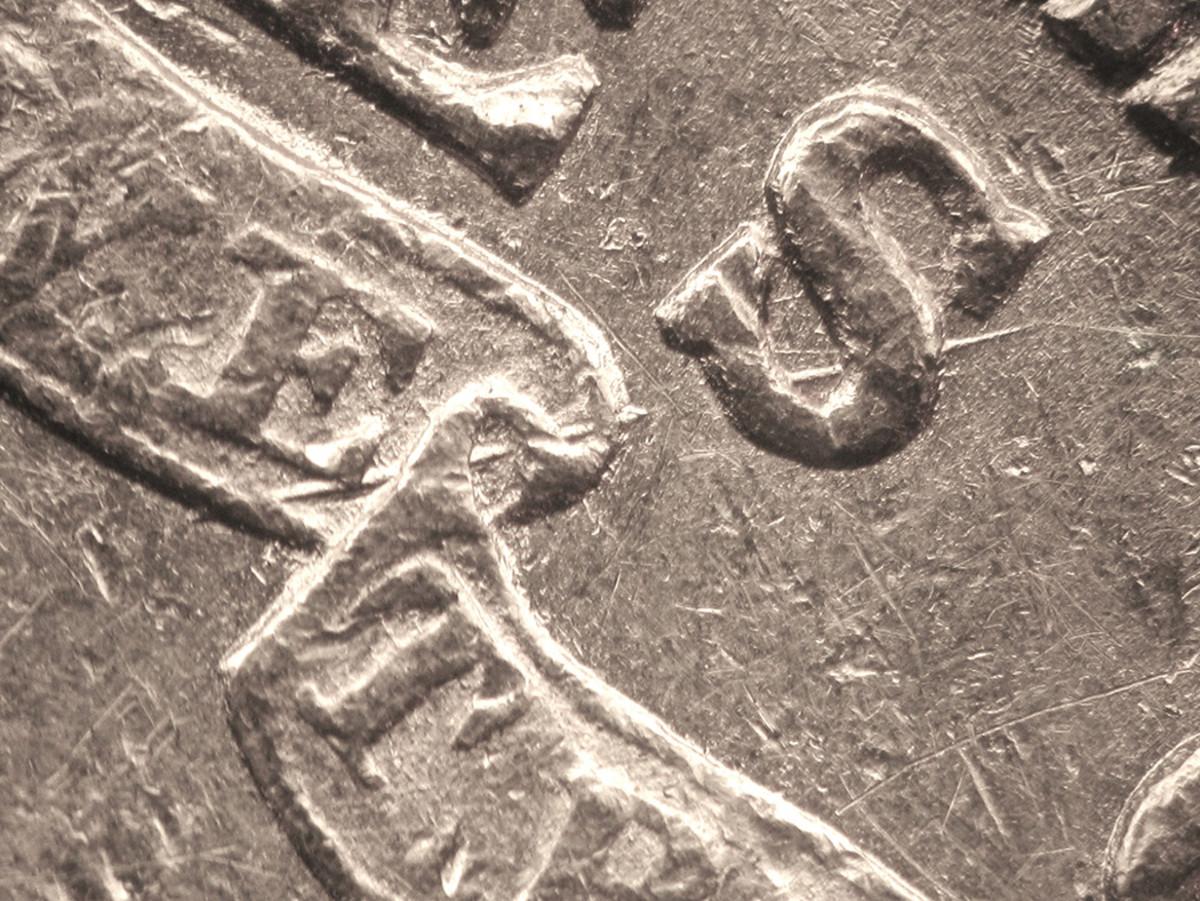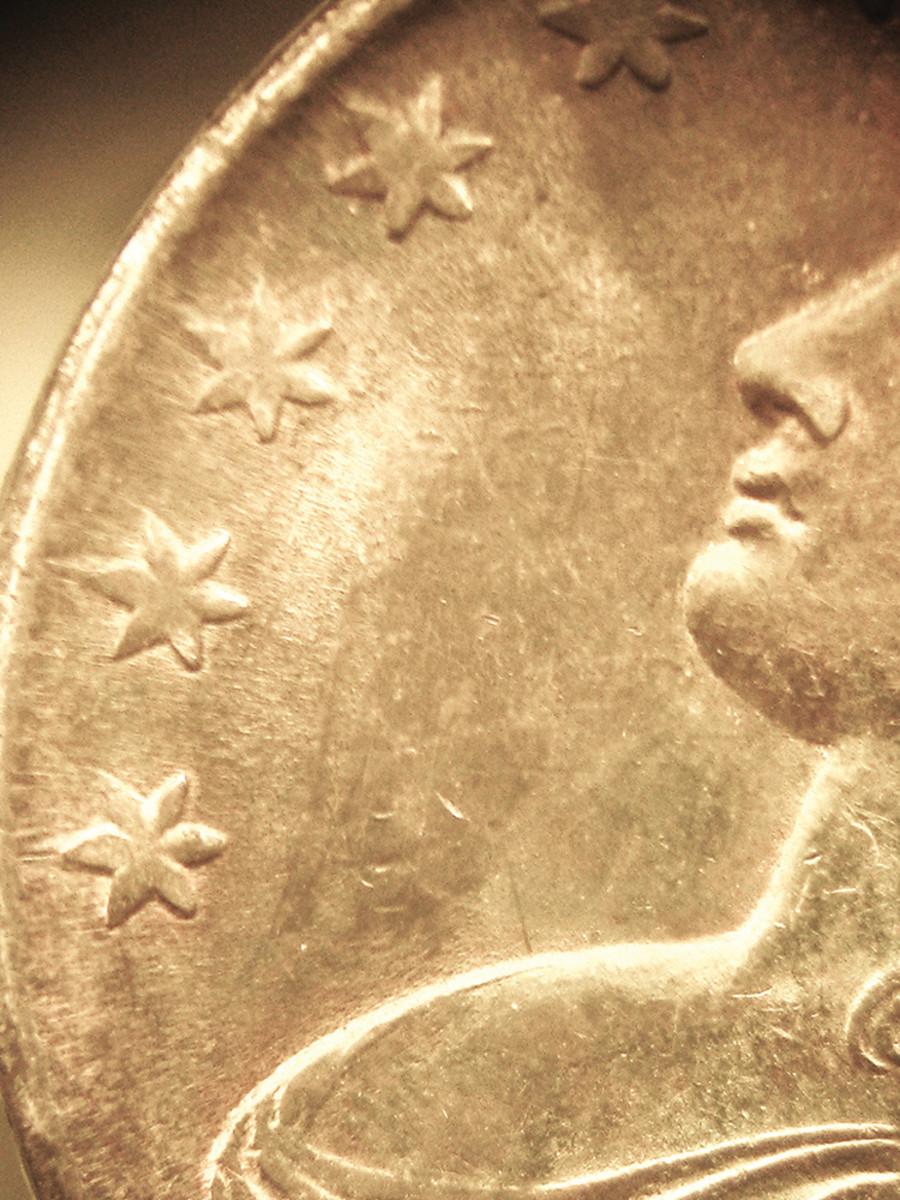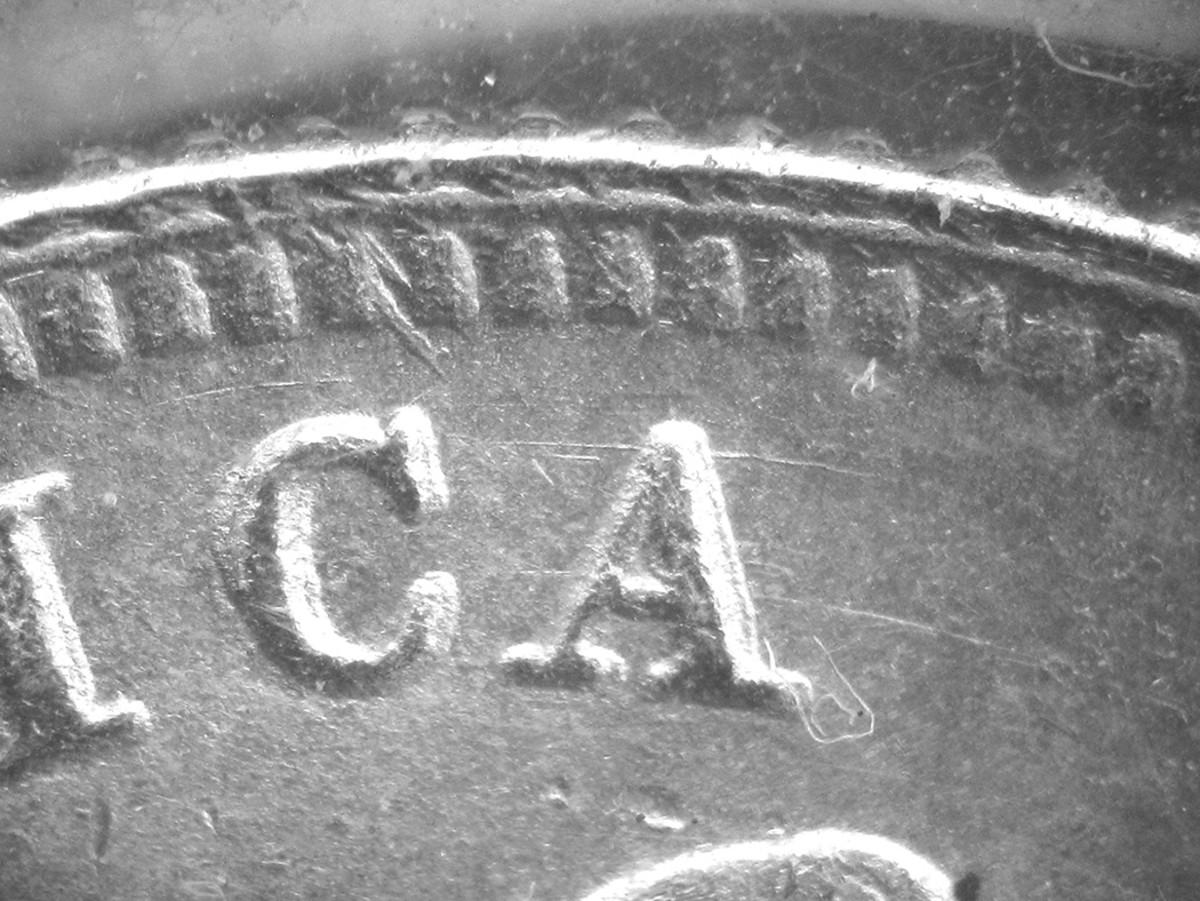- Coins
- Sports
- Cars
- Military
- Antiques
- Americana
- Antique Advertising
- Art
- Banks
- Books
- Bottles
- Clocks & Watches
- Coca-Cola
- Comic Books & Art
- Contemporary Collectibles
- Dolls
- Ephemera
- Folk Art
- Furniture
- Glass & Ceramics
- Hardware
- Holidays
- Jewelry
- Kitchen
- Lighting
- Luxury Items
- Movies Entertainment
- Music
- Petroliana
- Photography
- Postcards & Photography
- Posters (Movie/Music/Travel)
- Pottery & Porcelain
- Silver
- Tools
- Toys & Games
- Video Games
- Vintage Fashion
- Records
- Articles
- Events
A Look at Burnishing, Tool Marks, Weakness and More
Tips and tricks to make your hobby
more fulfilling, exciting and fun.
more fulfilling, exciting and fun.

The Burnishing Process
Defects on a coin can be removed or lessened (especially on its flat surface) by a process called “Burnishing.” A small round or cup-shaped metal tool is pushed into the surface to smooth out defects to the surface such as scratches in order to make them less noticeable. Of course, doing this to the coin alters the level of its original surface, depending on how much pressure is applied.
Keys to the detection of this alteration are usually changes of color, a depression, remaining evidence of the defect and disruption of any trace of metal flow that may have remained on the original surface. The field of the Draped Bust half dollar in shows three of these characteristics. This form of surface alteration has been given the name “smoothing” by some to replace more derogatory descriptions such as surface alteration, repaired surface or tooled surface.
Tool Marks
The most common type of tool marks are usually thick gouges into a die that are pointed at their tip. Since they are damaged into the surface of a die, they appear as raised “spikes” on the struck coin. Tool marks can appear anywhere on a coin and vary in size from large spikes to tiny, raised marks where the die was “touched up.”
This single tool mark on a genuine die leaves the raised “spikes” through several parts of the design.
F. Michael Fazzari
The large ones coming from the denticles around the rim usually occur on counterfeits. Perhaps these result from a large tooth file being used to “dress” the sides of the counterfeit die. It’s important to remember that, while tool marks are common on older fakes, they can occasionally be found on genuine coins, too
What Exactly Does ‘Circulated’ Mean?
On one of the numismatic chat forums, the question was asked if a coin became circulated as soon as it left the dies. “Circulation” and “circulated” are nebulous words. Folks use them to describe everything under the sun; nevertheless, many of these usages are correct! A dictionary definition is this: “to pass from place to place, from person to person, etc.” So yes, technically a coin circulates as soon as it leaves the die chamber and all through the Mint, Federal Reserve, Bank, into the hands of the person who spends it and beyond. However, although a coin can be said to have circulated in this way, it can still remain in its original, as struck, Mint State (with no trace of wear) condition for a while. We call it an uncirculated coin when we pull it from pocket change, and it has remained in Mint State condition. See the problem these words can cause? For a numismatist, uncirculated coins are ones that have remained in Mint State no matter their history, while circulated coins (passed from place to place) show signs of friction wear, etc. from that circulation.
Surface Weakness
Some coins show a weakness in their design. Many of our modern Lincoln cents provide a fertile coin type to search for this characteristic. One such coin came into ICG recently. There are various causes for loss of design detail on an original, Mint State coin such as the one I’ve imaged. The planchet can be out of tolerance so there is not enough metal to fill the dies completely, the dies themselves can be worn or the press was not set up correctly with the dies coming together too far apart during the strike.
The weight of this cent is correct, so in this case the problem was with the coin press. Note how the surface of the weak area of the coin still shows the surface of the original planchet. This is enough to confirm that the loss of design is not from wear or damage.



